Toro Toro National Park may be Bolivia’s smallest national park, but it delivers big on adventure. From sweeping canyons and magical caves to ancient rock paintings and pristine dinosaur fossils, this off-the-beaten-path destination offers a truly unique experience.
We only had two days at the park, but we could have easily spent more time discovering the trails. You don’t have to be a seasoned hiker to enjoy Toro Toro. While many visitors join organized tours, it’s very doable to explore independently with a local guide. Here’s everything you need to know before visiting Toro Toro National Park, Bolivia.
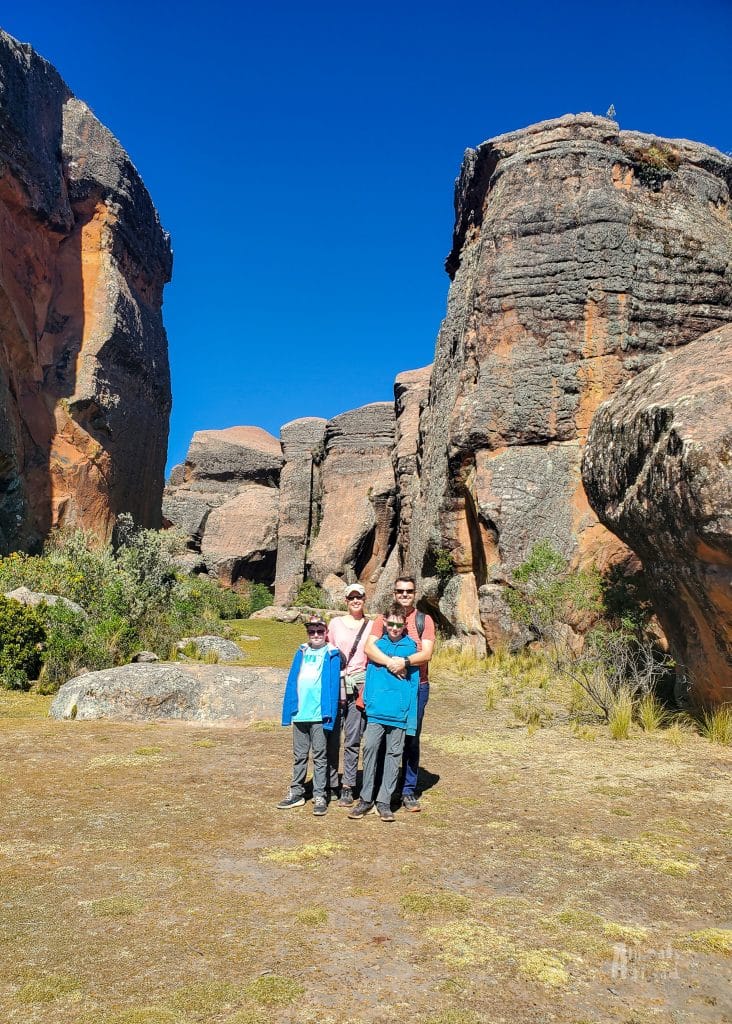
Getting to Toro Toro from Cochabamba
Nestled on the eastern slope of the Andes Mountains, Toro Toro National Park is a three-hour drive outside of Cochabamba, where the closest airport is located. You can get there in one of two ways: by public transport or rental car.
Daily public buses leave from Cochabamba starting at 5 a.m., but they only depart once full, meaning you may end up waiting hours. We opted to rent a car to control our timing. Just be sure your rental is permitted to leave city limits—we made the mistake of booking a city car and were charged an extra USD 100 per day.
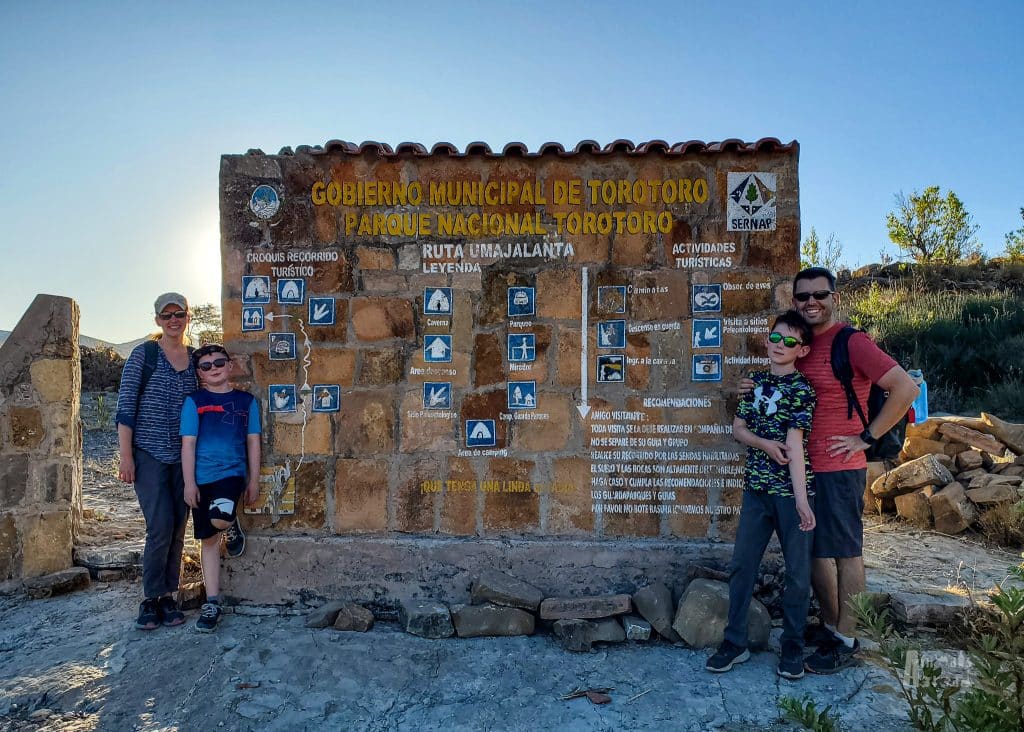
Road Conditions
The drive is mostly paved and in good condition, except for the final 5 km approaching Toro Toro, which was still under construction during our visit. That section involved gravel roads, potholes, and some confusing detours.
Note: There are several sections on the main road with loose rocks from landslides. This road may be more dangerous during the wet season (January to March) with increased debris and risk of landslides.
Where to Stay
There are several hostels in Toro Toro within walking distance of the park office. We stayed at Eden Hostel and highly recommend it—clean rooms with private bathrooms, warm blankets for chilly nights, friendly hosts, budget breakfast, and just a 5-minute walk to the trailhead.
How Long to Stay
Initially, we planned a day trip from Cochabamba, not realizing the 3-hour drive each way. Luckily, we realized our big mistake in time! Give yourself at least two days to explore. We stayed one night, which allowed us to do a hike the afternoon we arrived and another the next morning before heading back.
Looking back, Toro Toro offers so much to explore; two nights would have given us more time for hiking. The park pass is valid for four days, so you’ve got flexibility if you want to take your time.
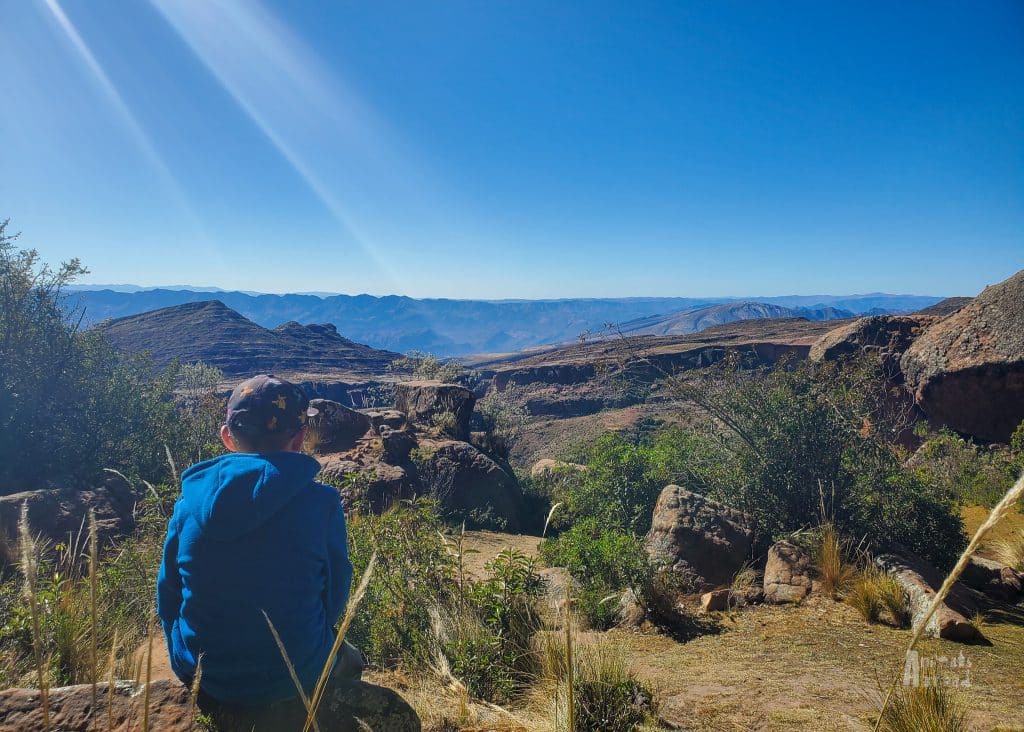
Hiking Costs
There are two fees to hike in Toro Toro:
• Park pass: USD 20 per adult (valid for 4 days); free for kids under 10.
• Guide: Guides are mandatory and hired next door to the ticket office. Costs vary based on the hike and whether vehicle transport is required. There are no English-speaking guides—ours used Google Translate, and it worked great.
Ticket office hours: 7:30 a.m. – 12:30 p.m., and reopens at 1:30 p.m.
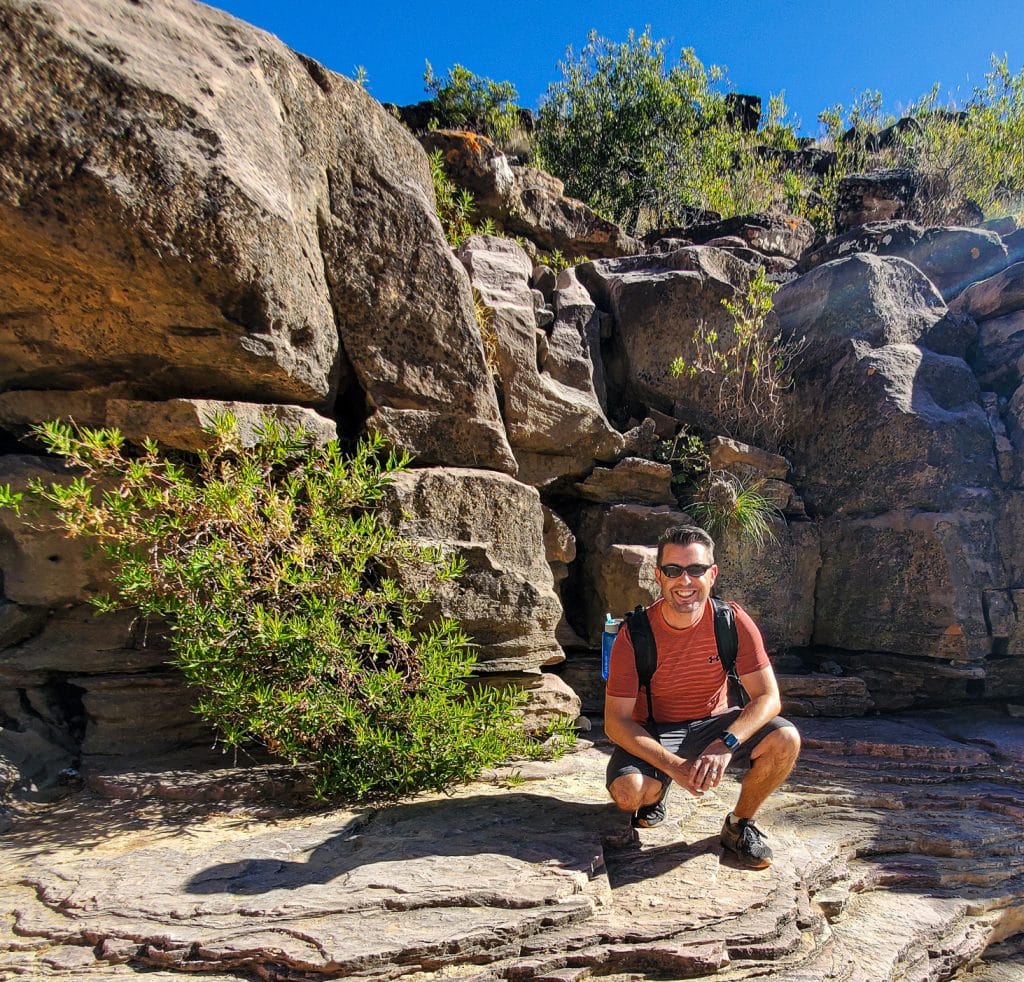
Top Hikes in Toro Toro
Known as the Jurassic Park of Bolivia, we knew the boys would be most interested in the trails that highlighted the incredible dinosaur fossils.
El Vergel
We started on a hillside covered in fossilized dinosaur tracks. Our guide explained how the shifting of tectonic plates over millennia created the illusion of dinosaurs walking uphill rather than on flat surfaces. The preservation was incredible, and our boys loved walking alongside the tracks and comparing their footprints to the dinosaurs.
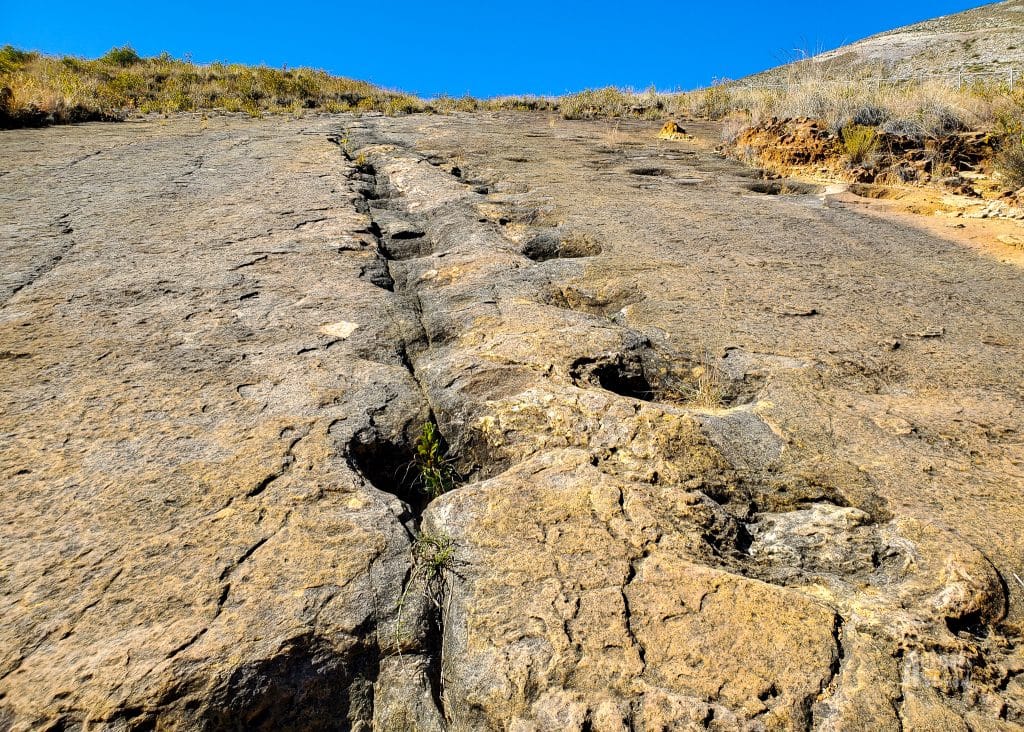
Later, we encountered a dinosaur print so large that all four of us could stand in it together, a humbling experience, imagining the size of these prehistoric giants.
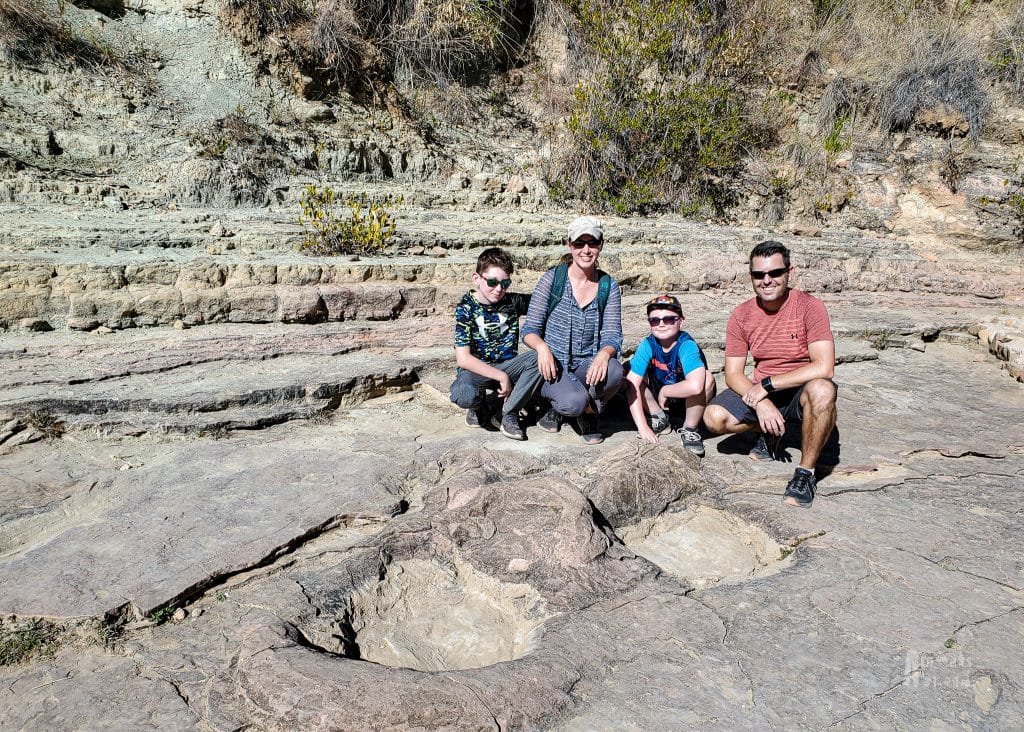
Next, we hiked to viewpoints overlooking the stunning Toro Toro Canyon, which plunges 300 meters (984 feet) in places. From there, you can descend to swim in the river below (adds 1.5–2 hours), but we weren’t up for the steep steps down and a treacherous climb up. Instead, we adjusted our return via the Chiflón Trail, which features a waterfall and prehistoric cave paintings.
El Vergel Hiking Info:
• Duration: 4 hours (with a change in itinerary)
• Difficulty: Easy to moderate (some incline and rock scrambling)
• Cost: USD 20 guide fee
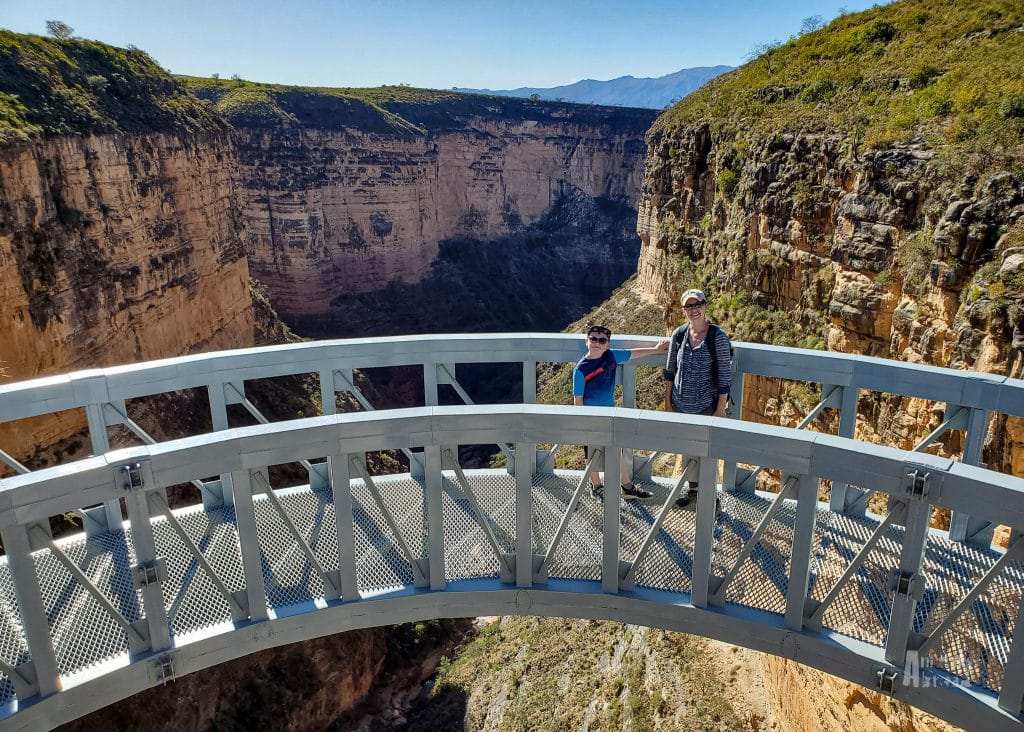
Ciudad de Itas
This is one of the most stunning hikes we have ever done. We began at the summit of Toro Toro National Park, with incredible views of the surrounding areas. The trail then weaves between several unique caves and rock formations. The kids loved spotting “animals” in the rocks, like cloud shapes come to life.
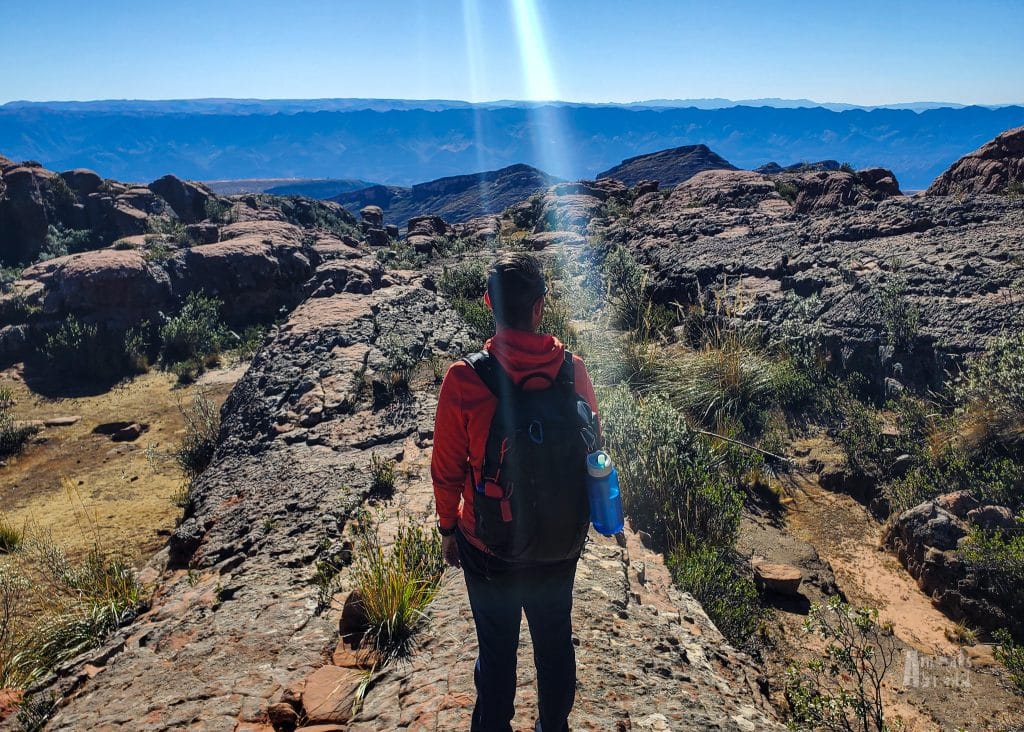
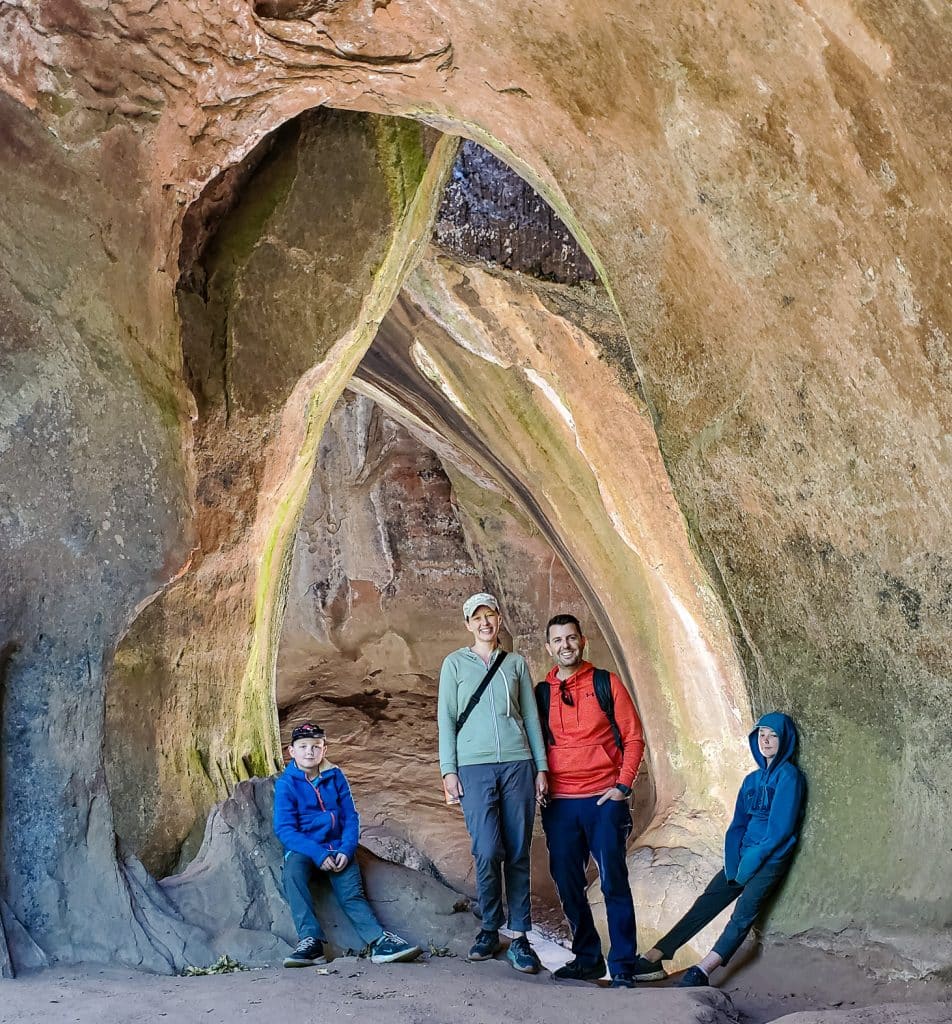
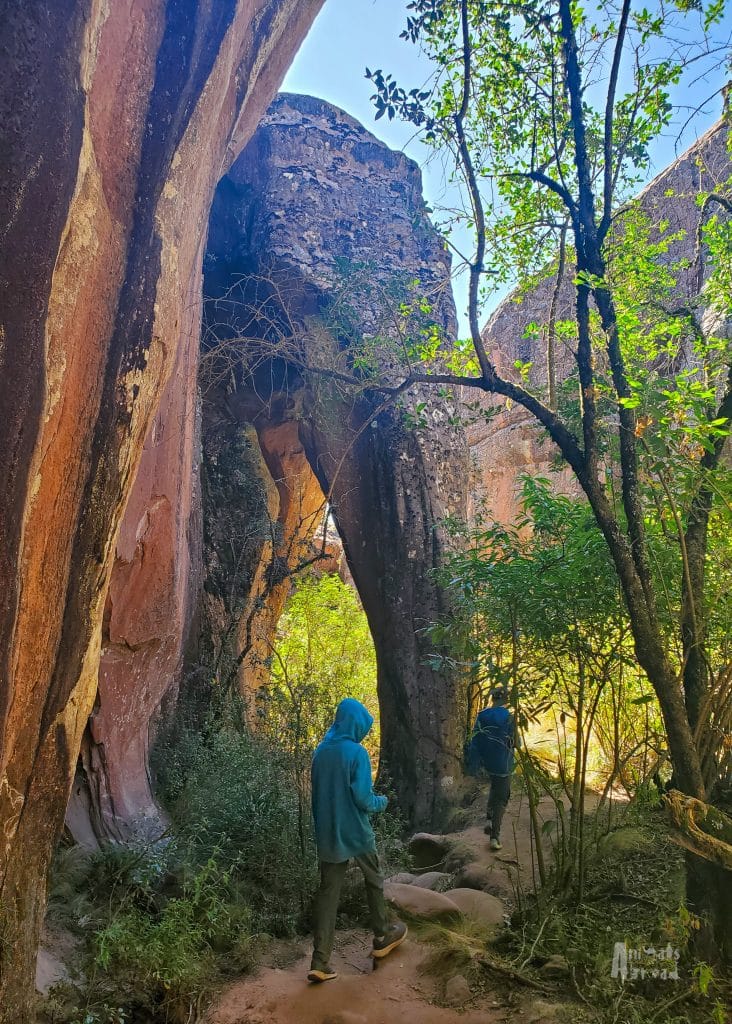
Ciudad de Itas Hiking Info:
• Duration: 4 hours total (2 hours hiking plus one hour drive each way)
• Difficulty: Moderate, several steep inclines and declines. The altitude at the peak is 3800 meters (12,467 feet), which makes the hike more challenging, especially if you are not acclimatized.
• Cost: USD 20 guide fee and USD 60 transportation
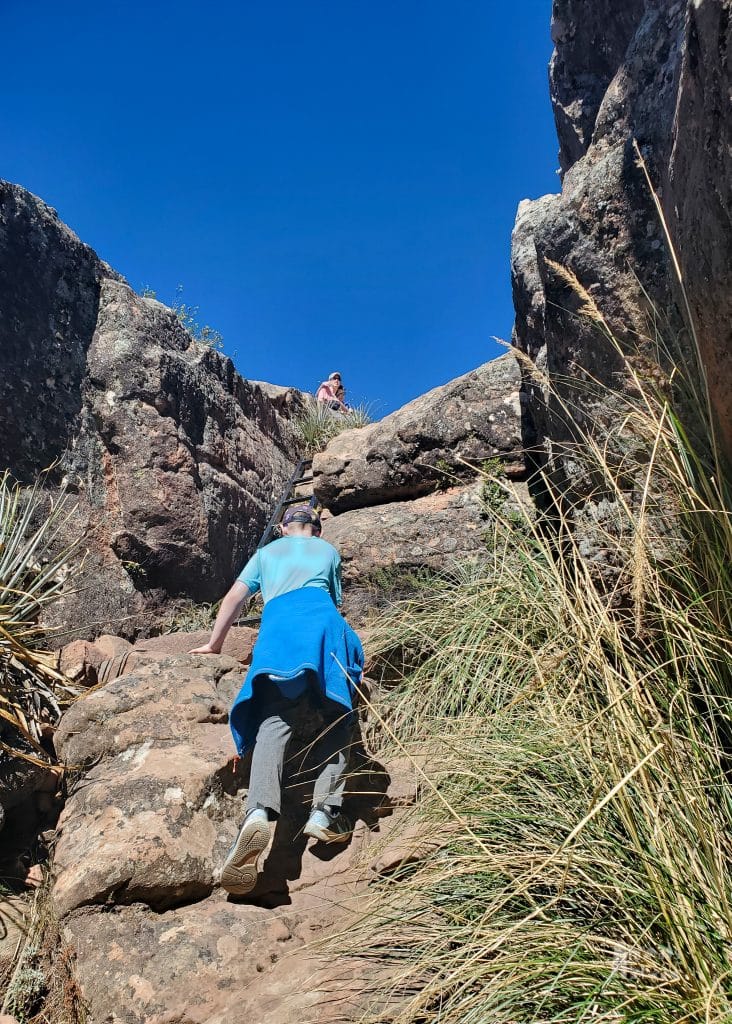
Caverna de Umajalanta
We didn’t have time to do this hike, however, it offers another unique experience as you descend into the largest cavern in Bolivia. Once inside, you will travel through an extensive cave network with stalactites and stalagmites formations. Keep a lookout for vampire bats, blind fish, and viscachas (a type of rabbit).
• Duration: 4 hours
• Difficulty: Moderate to hard. This hike involves rappelling, rock climbing, and tight spaces.
This hike is often paired with Ciudad de Itas for a full-day adventure.

Turtle Cemetery
This easy 3.5 km trail leads to a paleontology center with fossilized turtle shells, a sauropod femur, and other prehistoric finds from the Cretaceous period.
Tips for Hiking Toro Toro National Park with Kids
• Bring extra water—the sun is strong even in winter.
• Start hikes early if possible to avoid the heat.
• There are no bathrooms on most trails—bring toilet paper!
• Pack light snacks like granola bars or fruit, as many hikes are long.
• Bring layers. Mornings (especially at higher elevations) are cold, while the afternoons are hot.
• Wear long pants. Trails are narrow and lined with spiky flora that can scrape bare legs.
• Sturdy shoes are essential — some trails involve scrambling over rocks or navigating steep sections.
• Talk to your guide in advance about your kids’ ages and stamina. They can often adjust the pace or route accordingly.
• Make it fun! Encourage kids to look for dinosaur tracks, unusual rocks, or try spotting shapes in the formations (especially in Ciudad de Itas).
Visiting Cochabamba
Hiking enthusiasts will be drawn to Toro Toro, but if you have an extra day or two, Cochabamba is worth checking out.
In recent years, Cochabamba has started to gain interest in the backpacking community as a place to visit for its surrounding beauty, great food, and lively culture. Sitting at 2,558 metres (8392 feet) above sea level, Chochabamba is also a great place to stay and acclimatize before heading to Toro Toro or the Salt Flats in Uyuni.
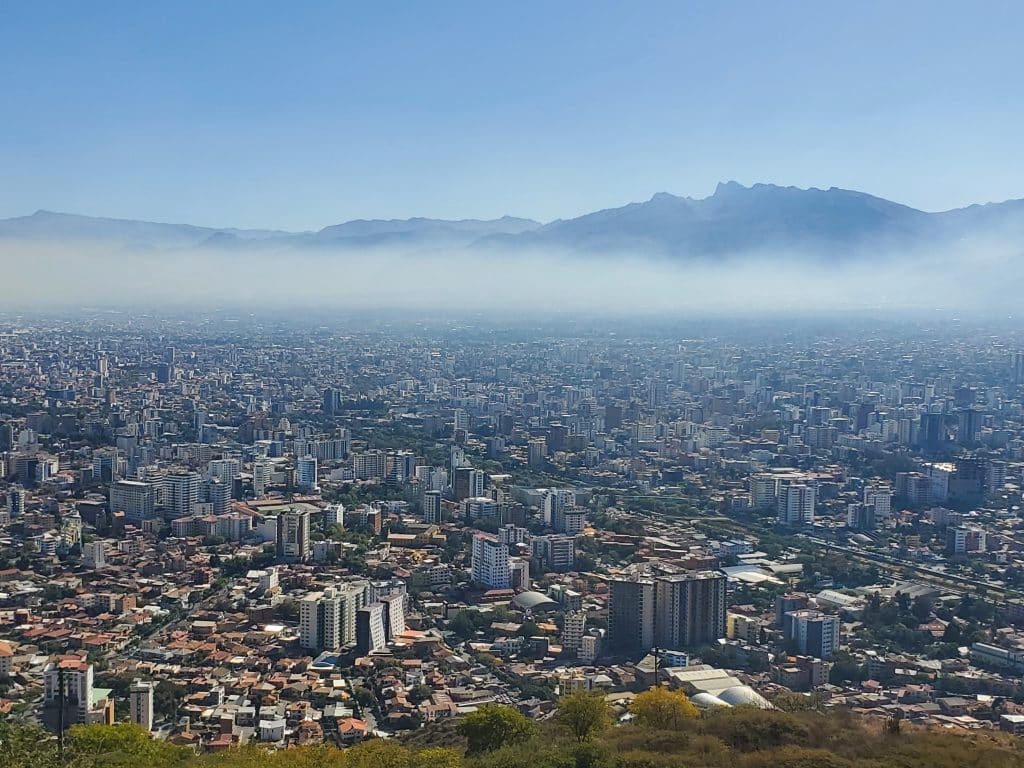
Visit the Cristo de la Concordia
Standing over 40 m (132 ft) tall, this Christ statue atop San Pedro Hill rivals Rio’s Christ the Redeemer. To get to the top of San Pedro Hill, you can take the Teleférico (6.50 BOB), hike 2,000 steps, or grab a taxi. We opted to take a taxi from the Teleferico station to the top, which cost us 20 BOB.

Take in the Street Art
Cochabamba is known for its street art and hosts a yearly festival that attracts artists from around South America. There are countless beautifully elaborate murals on buildings throughout the town. You can spot many just by wandering, or join a bike tour to find the best ones.

Relax at a Playground
Our favourite was Parque de la Autonomía, near the Teleférico station at San Pedro Hill. For just 2.50 BOB per child, our boys played for hours while we relaxed in the shade—a perfect way to wind down and soak up the city’s atmosphere.
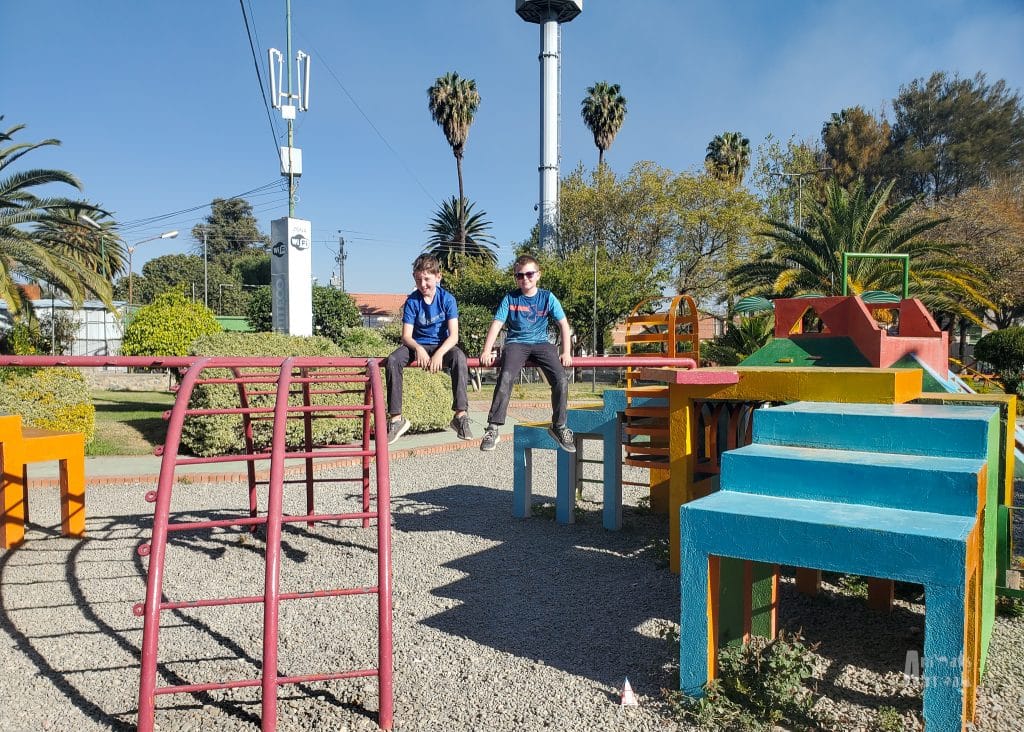
Hiking Toro Toro
Toro Toro National Park was one of the many surprises Bolivia had to offer. From fossil hunting and canyon hikes to mountaintop views, it’s a destination full of adventure and discovery. The park’s natural wonders were a highlight of our time in Bolivia, and with a little planning, it’s an unforgettable family experience that’s well worth the journey.
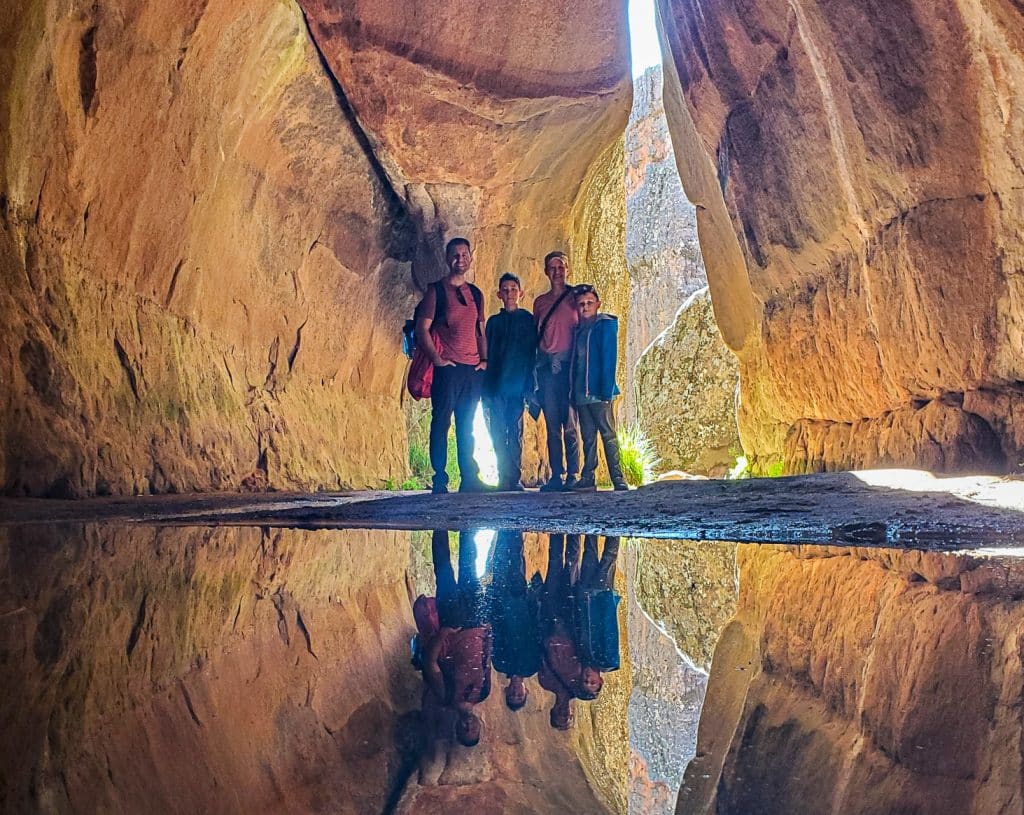
Ready to Explore Bolivia?
Check out these related posts to help plan your trip:
• Bolivia with Kids: A 27-Day Itinerary
• Family Guide to La Paz: A Flexible 5-Day Itinerary
• Breathless in Bolivia: Managing Altitude Sickness as a Family
• Travelling to the Amazon: An Adventure in Itself
• Exploring Bolivia’s Amazon: Pampas and Madidi National Park
• Chasing Jaguars in Bolivia: A Family Safari in Jaguarland
• Bolivia’s Uyuni Salt Flats with Kids: A Family Adventure

